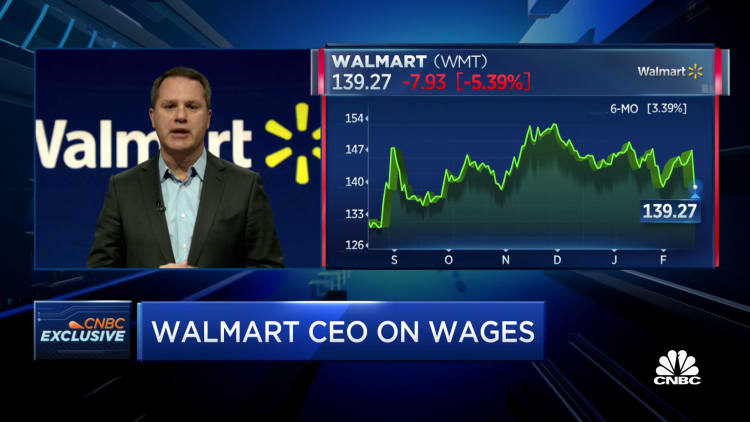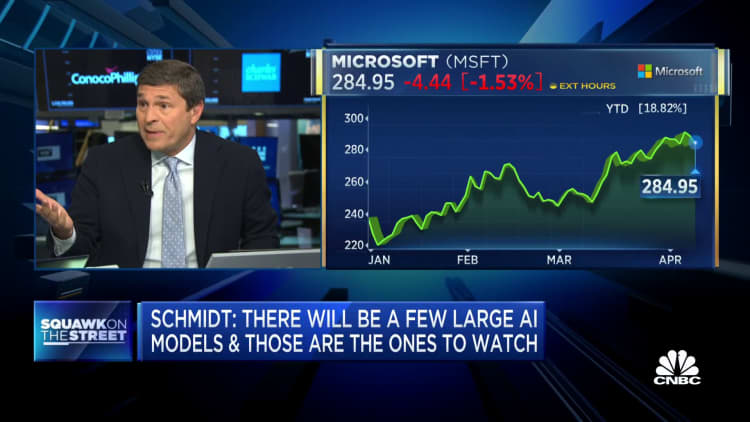What Home Depot’s billion-dollar pay raise can prove about workers

Workers walk through the garden center at a Home Depot store
Scott Olson/Getty Images
In its last quarterly earnings report, Home Depot forecast flat sales and lower profits for 2023, partly because consumers aren’t spending as much on home improvement products as they did during the pandemic, a boon period for the sector. Another hit to its bottom line, the company predicted, was the decision to invest $1 billion this year to increase hourly wages for every one of its frontline workers.
Giving pay raises at the same time sales are slumping seems like an incongruous strategy, but Home Depot executives project that it will actually boost the big-box retailer’s industry-leading position. “We plan to continue to capture market share,” CFO Richard McPhail told analysts during the February earnings call. One reason, he said, is “the unique advantage that our orange-blooded associates give us over our competition,” alluding to Home Depot’s signature color and the term for its frontline employees.
While Home Depot made a splash with the billion-dollar pay hike, it comes on the heels of similar moves by other major retailers that also espoused the benefits of investing in a well-paid workforce.
A year ago February, Target set a new starting wage range from $15 to $24 an hour for its so-called team members and expanded access to health care benefits, at a cost of $300 million in 2022. “We know that those investments lead to a more engaged team and that team then builds greater guest trust and loyalty, which in turn continues to power our growth across the company,” said Melissa Kremer, chief human resources officer, last fall when Target was named 12th among Fortune’s 100 best companies to work for.
In January, Walmart announced it was raising the minimum hourly wage for its store employees to $14 from $12 and up to $19 an hour, establishing an average wage of $17.50 an hour. “Retaining talent and establishing career opportunities for our associates remains a central objective to our growth ambitions,” CFO John David Rainey said at an investor meeting in April. “We are confident we can make the investments needed to remain competitive in a tight labor market while also growing our profitability.”

Although it’s difficult to draw a straight line from the cost of labor to sales, profits and market share — and retailers are also making big investments in automation — retaining a loyal and satisfied workforce can be seen as a wise strategy amid an ongoing battle for talent, and even as persistent inflation and interest rate hikes are expected to further moderate what has been robust consumer spending.
Irrespective of Home Depot’s strong track record on Wall Street, Morgan Stanley analyst Simeon Gutman said he was somewhat surprised by the $1-billion outlay. “The investment community largely thought Home Depot was already in prime position in terms of wage rates,” he said, noting a series of pay increases in recent years. And the fact that the company is anticipating less-than-rosy sales this year was another eyebrow-raiser. “The [home improvement] environment seems to be weakening, not accelerating, and therefore incremental wage investments at this time would open the door to more questions and surprise. But if you look at Home Depot over multiple years, you’re okay with it.”
Ann-Marie Campbell, executive vice president of U.S. stores and international operations at Home Depot, says the increase in wages is just one component of the investment story in associates. “We know that the key to an engaged and committed workforce is investing in the person and in their development,” she said.
The company also began the year with a new store leadership structure, creating new management positions and increasing the number of managers on the floor at any given time. “This is a meaningful investment that we believe will position us favorably in the marketplace,” she said.
“Essentially what they’re doing is reinvesting in a key competitive advantage of their business model, which is service within their stores,” said Brian Nagel, an analyst with Oppenheimer.
Market leaders such as Home Depot, Walmart and Target that have scale should be in better positions than mid-size competitors to invest in their labor force, Gutman said. “They’re behaving as they should given the tight labor market, showing leadership and not just thinking about a 12-month timeframe. They’re thinking about 12 to 36 months.”
The efficiency wage theory
The concept that maintaining a well-compensated, enthusiastic workforce is good for business is at the heart of what labor economists refer to as the efficiency wage theory, which postulates that paying employees higher than minimum wages increases productivity, retention rates and loyalty. That, in turn, is reflected in customer satisfaction and goodwill versus the competition.
“Providing customers a compelling reason to shop at your stores requires giving them real value and good service, and that’s not possible without having motivated and empowered employees,” said Zeynep Ton, a professor at MIT Sloan School of Management in Cambridge, Massachusetts, who has studied retail operations for more than 20 years. “Any retailer that wants to win needs to make sure they attract and retain the right employees and design their jobs so they can be productive and serve their customers well. And in a tight labor market, it’s getting increasingly difficult to keep talent [if] you pay unlivable wages and [offer] few opportunities for growth and success.”
In addition to the efficiency wage theory, there is significant empirical evidence that paying low wages hinders employees’ ability to focus on the job and be productive, said Ton, who expounds on this topic in her forthcoming book, “The Case for Good Jobs.”
“It also drives turnover and attendance problems,” she said. “The bottom line is that employee turnover and low pay cost companies a lot more than executives may think, both financially and competitively.”
It’s hard to say when, and if, Home Depot will see a demonstrable return on the monumental expenditure for its frontline workers. Regardless, CEO Ted Decker said during the February earnings call, “We harken back to … what our founders said: that if we take care of our associates, they take care of the customer and everything takes care of itself. That’s what this investment is all about.”





